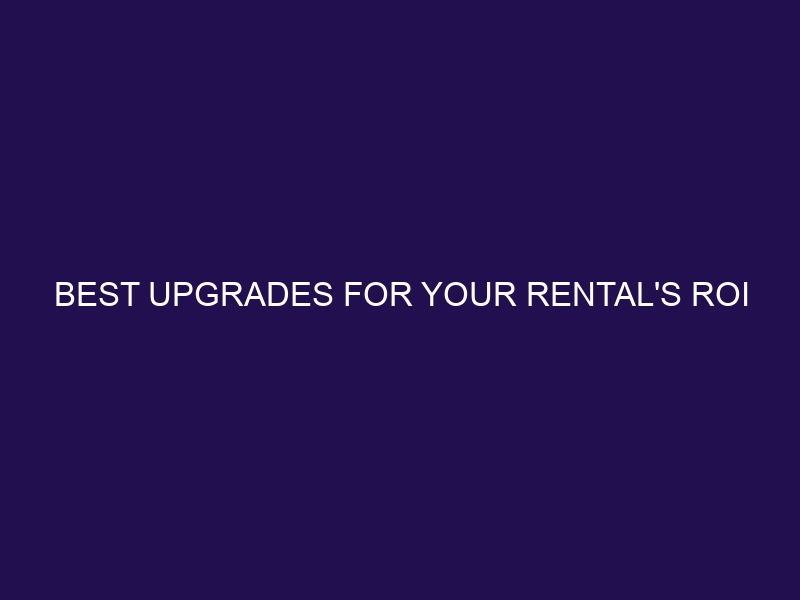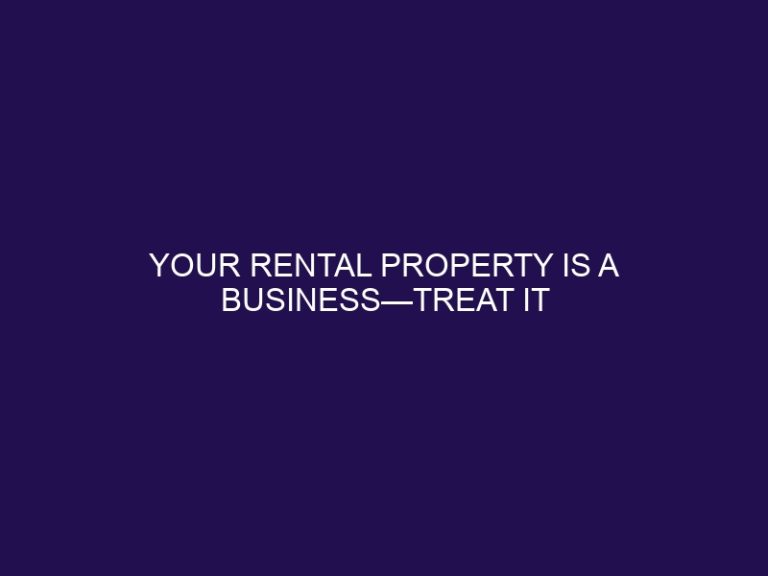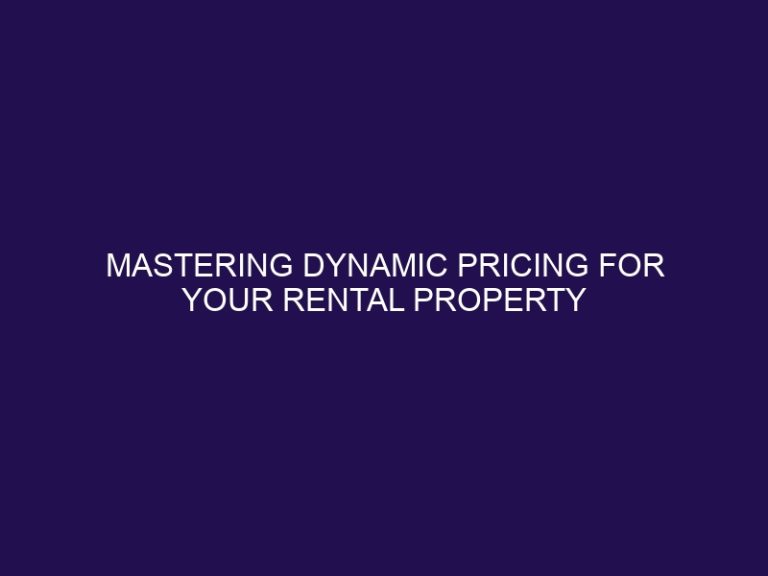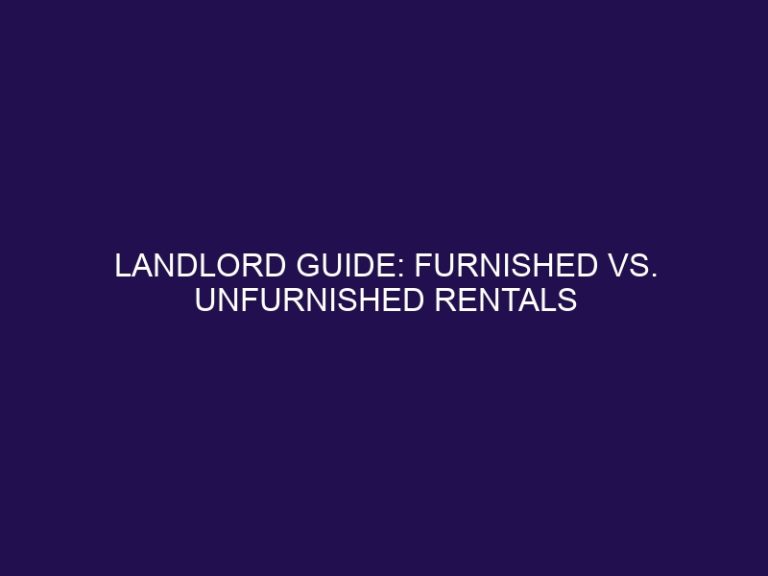Best Upgrades for Your Rental’s ROI
Introduction: Why Upgrading Your Rental Property is Important
As a rental property owner, it is crucial to constantly evaluate how you can improve your property to increase its value and attract quality tenants. Updating and upgrading your rental not only enhances its appearance and functionality but also has the potential to increase your return on investment (ROI). In fact, a study by the National Association of Realtors found that investing in property improvements can increase rental income by 5-10%. So, what are the best upgrades for your rental property?
What Are the Best Upgrades for Your Rental Property?
- Kitchen Upgrades: A modern and functional kitchen is a top priority for many renters. Consider updating appliances, adding an island or breakfast bar, and installing new countertops and cabinets.
- Bathroom Upgrades: Similar to the kitchen, a clean and updated bathroom can greatly impact a tenant’s decision. Simple upgrades like new fixtures, a fresh coat of paint, and updated flooring can make a big difference.
- Flooring Upgrades: Replacing old, worn-out flooring can instantly improve the overall appearance and value of your rental. Consider durable and low-maintenance options like hardwood, laminate, or vinyl.
- Energy-Efficient Upgrades: Not only do energy-efficient upgrades attract eco-conscious tenants, but they can also save you money in the long run. Consider installing energy-efficient appliances, LED lighting, and upgrading insulation.
- Curb Appeal Upgrades: The first impression of your rental is key in attracting tenants. Invest in landscaping, exterior paint, and a well-maintained entrance to make your property stand out.
How to Determine Which Upgrades Are Worth the Investment
- Consider the Local Rental Market: Understanding the rental market in your area can help you determine which upgrades will have the most impact. Research similar rental properties in your area to see what upgrades are popular and successful.
- Assess Your Target Renter Demographics: Consider the demographics of your target renters and their needs and preferences. For example, if you are targeting families, adding a fenced-in yard or additional storage space may be a valuable upgrade.
- Calculate Potential ROI: Before investing in any upgrades, it is important to calculate the potential ROI. Consider the upfront cost of the upgrade and how much it will increase rental income and property value.
How to Finance Rental Property Upgrades
- Use Cash Savings: If you have enough savings, paying for upgrades in cash is the most cost-effective option as it avoids interest charges.
- Take Out a Home Equity Loan: If you have built up equity in your rental property, you can use a home equity loan to finance upgrades at a lower interest rate.
- Consider a Personal Loan: If you don’t have enough equity in your property or want to keep your savings intact, consider a personal loan for financing upgrades.
Conclusion: The Long-Term Benefits of Upgrading Your Rental Property
Upgrading your rental property not only makes it more appealing to potential tenants but also has the potential to increase your ROI in the long run. By carefully considering the best upgrades for your property and financing options, you can attract quality tenants and increase its value and profitability.
What Are the Best Upgrades for Your Rental Property?
As a rental property owner, it is important to invest in upgrades that will not only attract tenants but also provide a return on investment (ROI). In this section, we will discuss the top upgrades that will add value to your rental property and ultimately increase your ROI. From kitchen and bathroom upgrades to energy-efficient and curb appeal enhancements, we will explore the various ways in which you can improve your rental property for maximum returns.
1. Kitchen Upgrades
- Assess current state: Evaluate the functionality, aesthetics, and appliances of your kitchen.
- Plan design and layout: Optimize space, consider modern trends, and prioritize storage for your kitchen upgrade.
- Upgrade appliances: Install energy-efficient models for improved performance and reduced utility costs in your kitchen.
- Enhance lighting: Incorporate task lighting and ambient fixtures for a welcoming atmosphere in your kitchen.
Consider timeless designs and durable materials for lasting appeal and value when upgrading your kitchen.
2. Bathroom Upgrades
- Assess the condition: Evaluate fixtures, flooring, and overall layout of your bathroom.
- Upgrade fixtures: Install modern faucets, showerheads, and energy-efficient toilets for a more updated look.
- Enhance lighting: Add bright, energy-efficient lighting to create a more inviting space.
- Improve ventilation: Consider installing exhaust fans in your bathroom to prevent mold and moisture issues.
3. Flooring Upgrades
- Assess the current condition of the flooring and determine potential improvements.
- Research durable and low-maintenance options for flooring such as laminate, vinyl, or engineered hardwood.
- Obtain quotes from reliable contractors and compare the costs and benefits of each type of flooring.
- Take into consideration the installation time and potential disruption to rental operations.
- Evaluate the potential return on investment based on the increased rental value and tenant satisfaction.
After upgrading the flooring in her rental property to luxury vinyl planks, Sarah experienced a 15% increase in rental inquiries and received positive feedback from tenants about the modern appearance and easy maintenance.
4. Energy-Efficient Upgrades
- Conduct an energy audit to identify areas for improvement.
- Upgrade to energy-efficient appliances and lighting to make energy-efficient upgrades.
- Improve insulation and seal air leaks to further improve energy efficiency.
- Install smart thermostats and consider renewable energy sources to maximize energy savings.
My friend made energy-efficient upgrades and saw a 30% reduction in utility bills within a year, making it a worthwhile investment.
5. Curb Appeal Upgrades
- Enhance landscaping with vibrant flowers and trimmed hedges.
- Upgrade the front door and mailbox for a welcoming first impression.
- Install outdoor lighting to highlight the property’s exterior features.
- Repaint exterior walls and fix any visible cracks or damages.
In 1893, the World’s Columbian Exposition in Chicago showcased the first ever Ferris Wheel, standing at 264 feet and offering breathtaking views of the city and Lake Michigan.
How to Determine Which Upgrades Are Worth the Investment
As a rental property owner, making upgrades to your unit can significantly impact your return on investment (ROI). However, not all upgrades are created equal. In this section, we will discuss how to determine which upgrades are worth the investment for your specific property. By considering the local rental market, assessing your target renter demographics, and calculating potential ROI, you can make informed decisions on where to invest your resources for the greatest returns. Let’s dive in.
1. Consider the Local Rental Market
- Research local rental rates and trends.
- Analyze demand for different property types.
- Consider the local rental market and neighborhood amenities, as well as proximity to public transportation.
2. Assess Your Target Renter Demographics
- Research local demographics to understand the preferences of potential renters.
- Analyze income levels and lifestyle choices of the target population.
- Consider family size, age groups, and occupation for tailored property upgrades.
Pro-tip: Understanding the demographics of your target renters helps you customize upgrades, maximizing the appeal and rental income potential of your property.
3. Calculate Potential ROI
- Analyze Comparable Properties: Compare similar upgrades and their impact on rental prices.
- Evaluate Rental Demand: Research tenant preferences and willingness to pay for specific upgrades.
- Cost-Benefit Analysis: Calculate Potential ROI against upgrade costs.
Consider high-ROI improvements like energy-efficient appliances and modern fixtures for optimal financial gains.
How to Finance Rental Property Upgrades
One of the most effective ways to increase the return on investment for your rental property is by making strategic upgrades. However, financing these upgrades can be a challenge for many property owners. In this section, we will discuss various methods for financing rental property upgrades. Whether you have cash savings or need to take out a loan, we will explore the different options available to help you make the most out of your investment.
1. Use Cash Savings
- Assess the cash flow of your rental property to determine available funds for savings.
- Set a budget for upgrades based on the cash savings you have.
- Prioritize upgrades based on immediate needs and potential return on investment.
2. Take Out a Home Equity Loan
- Check the current value of your home and the remaining balance on your mortgage.
- Research and compare various lenders’ options for home equity loans.
- Gather necessary documents, including proof of income, credit score, and property details.
- Submit your loan application and wait for approval.
- Once approved, carefully review the terms and conditions before finalizing the agreement for your home equity loan.
3. Consider a Personal Loan
- Check credit score and financial situation.
- Research and compare personal loan options, taking into account the following:
- Consider a Personal Loan
- Apply for the loan with favorable terms.
Once, a friend considered a personal loan to renovate her rental property. After meticulous research, she successfully secured a loan with favorable terms and boosted her property’s value.
Frequently Asked Questions
What are the top upgrades for a rental property?
The top 10 upgrades for a rental property are: plumbing fixtures, countertops, flooring, paint, lighting, appliances, landscaping, security systems, smart home features, and storage space.
Why are these upgrades considered the best for a rental property?
These upgrades strike a balance between boosting value and attracting top tenants without overspending. They also have a significant impact on the property’s appearance and functionality, leading to higher rent and resale value.
Should I wait for the housing market to improve or invest in physical upgrades?
While waiting for the housing market to improve can increase value, physical upgrades can have an immediate impact and make the property more appealing to potential tenants, ultimately leading to higher rental income.
How can upgrades help minimize costs for landlords?
Upgrades, such as energy-efficient appliances and smart home features, can improve energy efficiency and reduce utility costs for landlords. Additionally, some upgrades, such as landscaping and storage space, can attract higher quality tenants, minimizing the need for repairs and maintenance.
How can upgrades benefit landlords financially?
Upgrades can increase the resale value of the property and also lead to higher rent, generating more revenue for landlords. Landlords can also benefit from tax deductions for the upgrades, increasing their borrowing power and taxable income.
What should landlords consider when choosing which upgrades to invest in?
Landlords should consider the location and demographics of their rental property, as well as the overall features and appearance of similar properties in the neighborhood. It’s important to weigh all options and make strategic and appealing upgrades that will attract top tenants and maximize profits.







